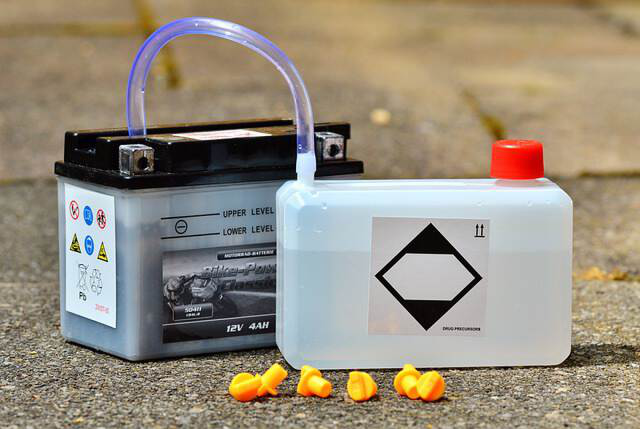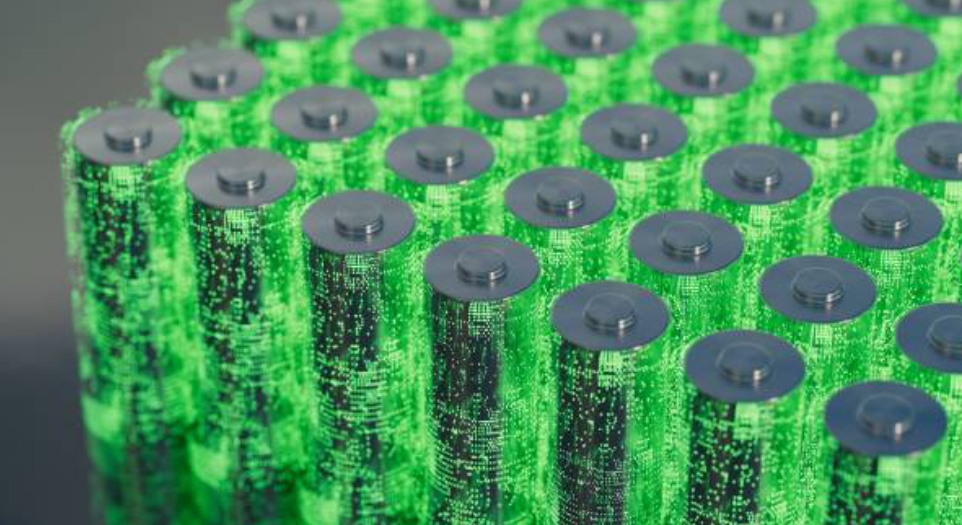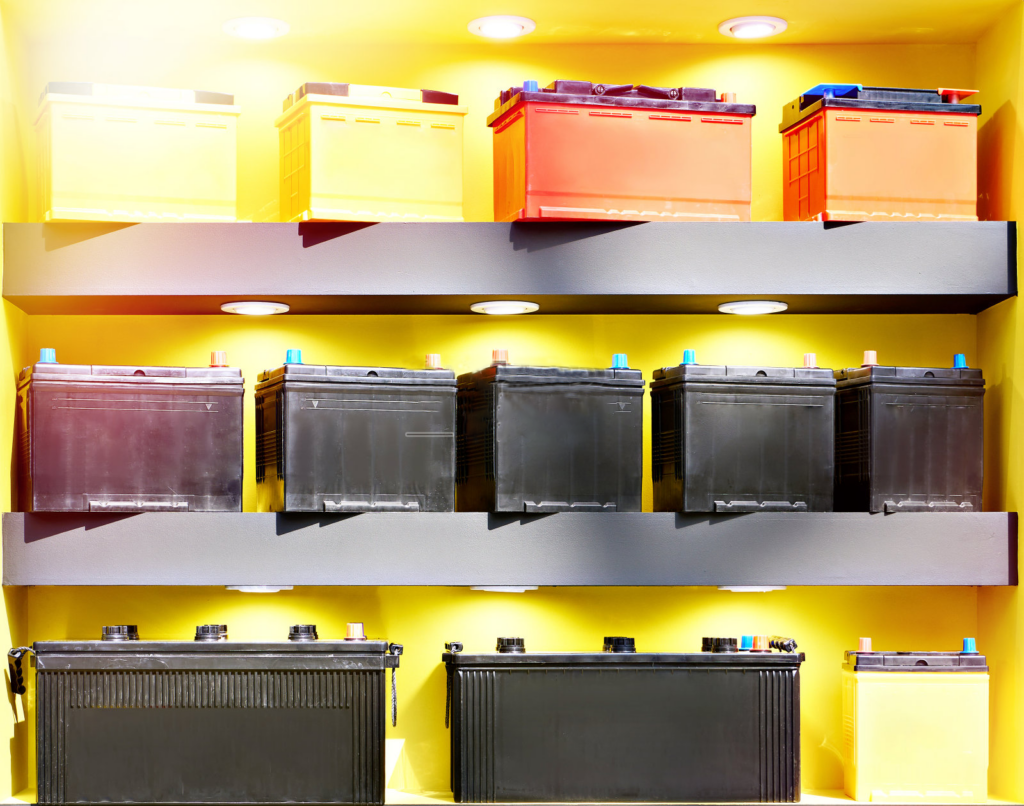
Source: Veer
Lead acid batteries have a long history of development and a wide range of applications. If you are reading this article, you obviously have some questions about lead acid batteries. For example, what is a lead acid battery? How does a lead acid battery work? Fortunately, we will provide a complete guide on lead acid battery.
What Is a Lead Acid Battery?

Source: pixabay
Lead acid batteries are rechargeable batteries that use lead and sulfuric acid to work. Immersion of lead in sulfuric acid allows for controlled chemical reactions, which is the reason why batteries generate electricity. The reaction is then reversed to charge the battery. It is worth mentioning that this technology has a history of over 100 years. Since its invention in 1859, lead acid batteries have been improved, and now they work more efficiently. Therefore, this article briefly introduces the working principle and main types of lead acid batteries.
How Does It Work?

Source: Microsoft Bing
Because sulfuric acid is used as an electrolyte in batteries, when it dissolves, its molecules are dispersed in the form of SO4-(negative ions) and 2H+(positive ions), which move freely. The positive ions move towards the negative edge of the battery, and the negative ions move towards the positive edge of the battery. Each hydrogen ion and sulfate ion collects one and two electrons and negative ions from the cathode and anode, which react with water to produce hydrogen and sulfuric acid. The product generated by the above reaction reacts with lead oxide to form lead peroxide.
During this process, through wire connections, current flows through an external circuit from the negative electrode plate to the positive electrode plate, which makes the battery capable of supplying power.
There are 4 main types of lead acid batteries, which are described in turn below.
FLA(Flooded Lead Acid Battery)
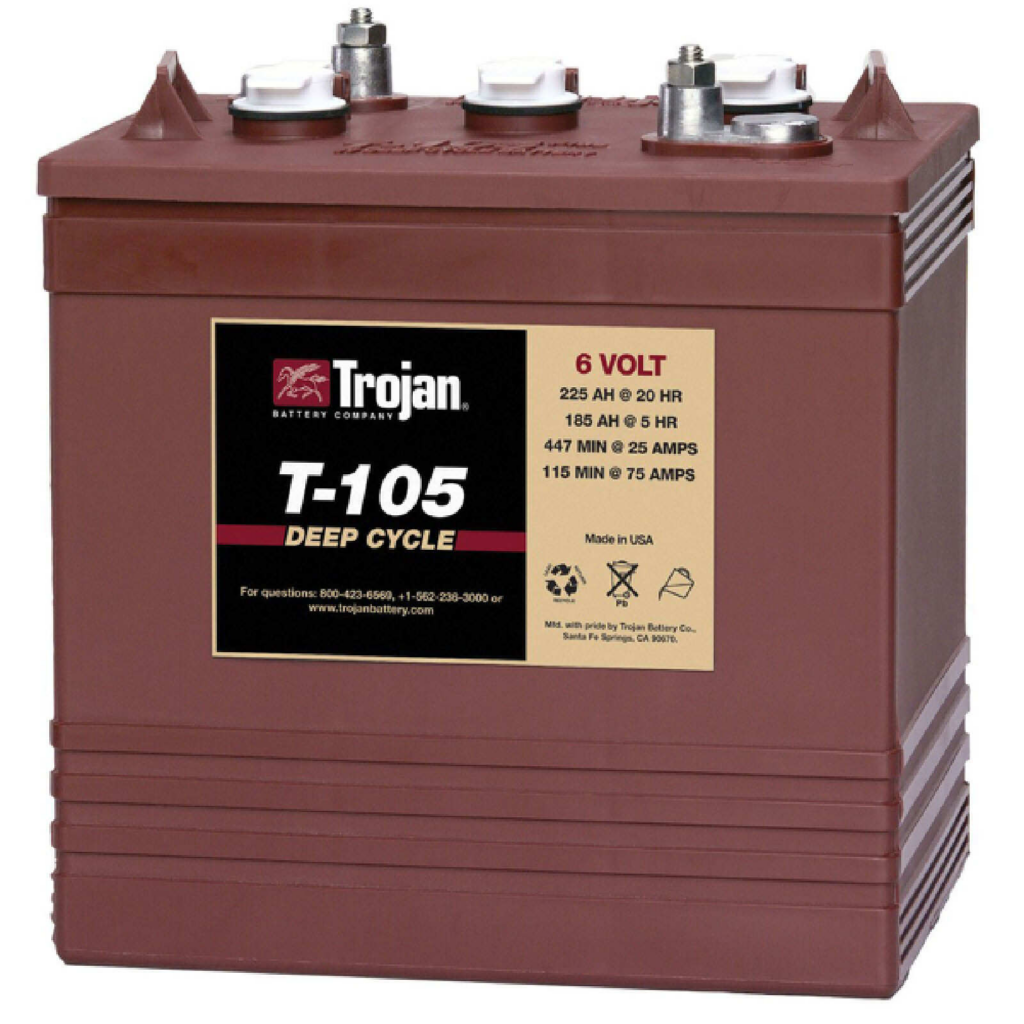
Source: Microsoft Bing
Introduction
This type of lead acid battery is a traditional engine ignition type with a traction battery. The electrolyte moves freely in the battery section. During using, the water in the electrolyte will evaporate and need to be regularly topped up. This maintenance procedure is very important, and if not completed, it will lead to battery damage. Liquid rich lead acid batteries must be kept in an upright or vertical position. When the battery is overturned, the acid can leak through the vent and cause damage because sulfuric acid is highly corrosive.
Pros
Flooded lead acid batteries have existed for more than a decade. Despite various limitations, they are also the cheapest type due to their low manufacturing costs and easy access to raw materials, making them the choice of many users. Also, this battery has a longer lifespan than other batteries.
Cons
There is a cover on the top of a rich liquid battery that can ventilate and prevent liquid splashing. Due to the evaporation and decomposition loss of water during use, it is necessary to regularly open the cover to add distilled water and adjust the density of the electrolyte. Traditionally, it is called an “open type” battery. Because of this, its disadvantage is that users need frequent maintenance, which increases the inconvenience of use.
Application
Flooded batteries are common in many applications and are the choice of many renewable energy and RV owners. Specific applications include automotive starter batteries, motorcycle batteries, ATV batteries, golf cart batteries, and solar and emergency backup systems.
SLA(Sealed Lead Acid Battery)

Source: Veer
Introduction
Sealed lead acid batteries are very similar to flooded lead acid batteries, but users cannot access the internal compartment, which means they do not have to add distilled water to maintain the battery’s operation. The electrolyte is sealed inside, enough to allow the battery to live for a sufficient number of cycles. Sealed lead acid batteries, also known as maintenance free batteries, are divided into two types: AGM sealed lead acid batteries and GEL sealed lead acid batteries.
AGM
- Introduction

Source: pixabay
AGM type batteries use a pure sulfuric acid aqueous solution as the electrolyte, most of which is present in a glass fiber membrane, and a portion of the electrolyte is absorbed inside the electrode plate. The AGM type sealed lead acid battery has a small amount of electrolyte, a thicker electrode plate, and a lower utilization rate of active substances than the open type battery.
- Pros
Compared with the same specification battery with flooded batteries type, it has the following advantages: the cycle charging capacity is 3 times higher than that of lead calcium batteries, and it has a longer service life. AGM lead acid batteries also have higher capacitance stability and more reliable low-temperature performance throughout the entire service life cycle.
- Cons
Due to the expensive raw materials of AGM, it is more expensive than flooded lead acid batteries, but at this price, you can enjoy the convenience of not having to maintain the battery or handle gas during the charging phase.
- Application
AGM batteries are ideal for mobile applications such as motor home batteries, marine batteries, motorcycle batteries, ATV batteries, and UPS and telecommunications batteries for generators.
Gel

Source: Microsoft Bing
- Introduction
The working principle of gel lead acid battery is similar to that of AGM battery, because the electrolyte is suspended, but the difference is that technically, AGM battery is still regarded as a wet battery. The electrolyte in the gel battery contains silicon dioxide additives, which can solidify or harden it, making its charging voltage lower than that of other types of lead-acid batteries.
- Pros
For this type of battery, it is widely used because they improve efficiency and design safety features. They generate most of the gas (hydrogen and oxygen) during internal recombination charging, so no additional maintenance is required. The batteries also last longer at warmer temperatures, so if you are exposed to higher enclosed temperatures for a long time, you can choose to use them.
- Cons
Gel lead acid batteries are not only the most expensive VRLA battery, but also the most sensitive VRLA battery. The production cost of gel batteries is relatively expensive, so they are not ideal for use in environments other than a few specific solar applications (mainly in very hot climates).
- Application
The design of gel electrolyte batteries is usually quite old, and there are few engineering options to improve them. Although not as common as AGM batteries, they often occur in situations of deep discharge, such as wheelchair and medical mobile batteries, trawler batteries, and RV deep cycle batteries.
Deep Cycle Lead Acid Battery
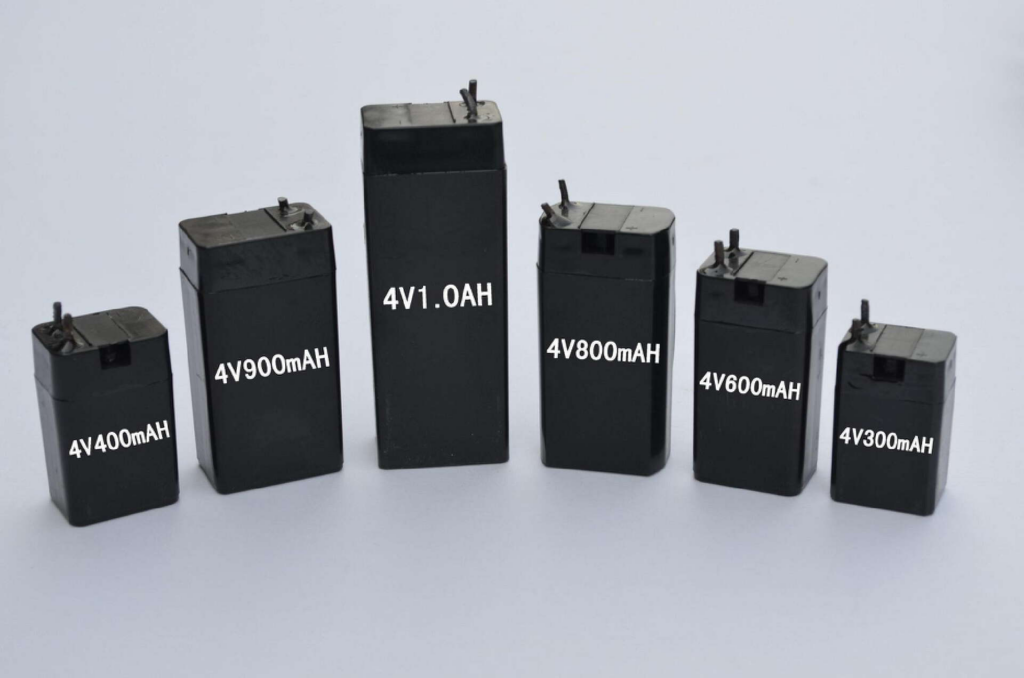
Source: Microsoft Bing
Introduction
A deep cycle lead acid battery is a battery designed to use most of its capacity for periodic deep discharge. For deep cycle lead acid batteries, there is an inverse relationship between the discharge depth of the battery and the number of charging and discharging cycles it can perform, with an average discharge depth of about 50%.
Pros
In terms of battery performance, this type of lead acid battery is suitable for deep discharge. After deep discharge, the battery can recover to its capacity before discharge by charging. In addition, the deep cycle battery electrode plate has a thicker active electrode plate, a higher density active slurry, and a thicker membrane. Alloys used for deep cycle battery plates contain more antimony, and thicker battery plates can resist corrosion by extending the charging and discharging cycles.
Cons
Compared to traditional lead acid batteries, new technologies for deep cycle lead acid batteries have also become common in the same form as automotive lead acid batteries, with a significant price premium. At the same time, the capacity of deep cycle batteries is usually limited by the electrolyte capacity rather than the plate quality.
Application
The uses of deep cycle batteries include marine applications, especially on sailboats that lack power generation capacity, usually smaller ships. What’s more, it can also be used in off grid energy storage systems for solar or wind energy, especially in small installations in individual buildings or motor homes.
Cranking or Engine Starting Lead Acid Batteries

Source: Microsoft Bing
Introduction
Cranking lead acid batteries allow power to be sent to the engine when the switch is activated, so these batteries are also referred to as engine starting lead aicd batteries. To start the engines, a short and strong burst of energy must be sent from the battery. The larger the surface area of the electrode plate inside the battery, the easier it is for the battery to provide the necessary power. These plates increase the surface area and make the tool start as smoothly as possible.
Application
Cranking lead aicd batteries during discharge can cause irreversible damage to the battery plates, resulting in reduced performance and life of the battery, and in some cases lead to complete failure. However, the ability of cranking batteries to provide high vibration power in a short period of time is essential for starting a vehicle’s engine. Thus, batteries are mainly used for starting and lighting of automobiles, motorcycles, tractors, diesel engines, etc.
How to Tell What Kind of Lead Acid Battery I Have?
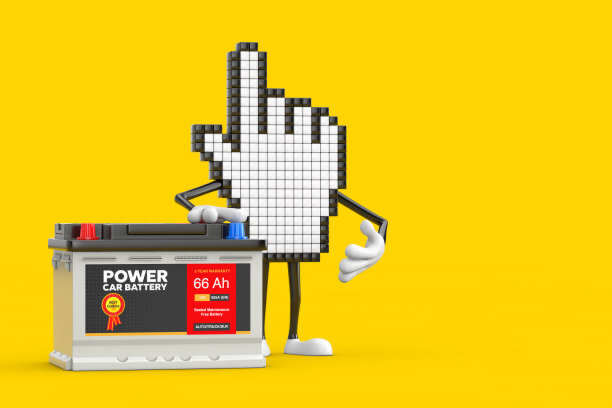
Source: Veer
Read The Label
By introducing the main types of lead acid batteries, you must have a general understanding of lead acid batteries. The most direct way to find out which type of battery you purchase or own is to read the label on the battery.
Liquid or flooded lead acid batteries will have “lead acid”, “wet battery”, “flooded lead acid”, or “liquid lead acid” on the label. The gel filled lead acid battery will have “gel filled”. And AGM lead acid batteries will have “AGM “, “absorbent glass mat “, “sealed regulating valve” or “valve regulating ” on the label”.
Also look at the top of the battery. Flooded lead acid batteries have a cover or removable top, unless they have a label that says “sealed.”. Gel filled and AGM lead acid batteries have flat roofs, except for the positive and negative electrodes.
You can also find the manufacturer’s model number on the battery label. The manufacturer and manufacturer’s model name or number are on the label or embossed on the housing. Use it to obtain specifications from a battery store or manufacturer’s internet site to ensure the type of batteries.
Give It a Little Shake

Source: Veer
Shake the battery is also a good way to determine the type of lead acid battery. After shaking vigorously, the liquid lead acid battery will still swing when it remains stationary again. Even if the battery is sealed, the center of gravity of the liquid will continue to move for a moment. The gel filled and AGM lead acid batteries will stop swinging when they are still again after shaking with force.
Conclusion

Source: Unplash
Among the 4 types of lead acid batteries, AGM batteries have a life expectancy of 5 to 10 years, making them a good choice for low-cost batteries. For applications with a life expectancy of more than 10 years, gel lead acid batteries are a better choice. Therefore, there are choices made for different applications and environmental conditions. Not only should the battery life be evaluated, but also the key properties of the environment should be considered.
I hope this article can help you understand the types and resolution methods of lead acid batteries.





